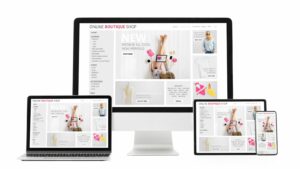 Starting a web design business can be an exciting venture for those with a passion for creativity and technology. It’s a field that offers endless opportunities to showcase your skills and build a successful career. With the increasing demand for online presence, the need for professional web designers is higher than ever. In this competitive industry, knowing how to navigate the initial stages of setting up your web design business is crucial. From defining your niche to establishing a strong online presence, every step plays a vital role in your success. This article will guide you through the essential steps to kickstart your web design business and position yourself for growth in the digital landscape.
Starting a web design business can be an exciting venture for those with a passion for creativity and technology. It’s a field that offers endless opportunities to showcase your skills and build a successful career. With the increasing demand for online presence, the need for professional web designers is higher than ever. In this competitive industry, knowing how to navigate the initial stages of setting up your web design business is crucial. From defining your niche to establishing a strong online presence, every step plays a vital role in your success. This article will guide you through the essential steps to kickstart your web design business and position yourself for growth in the digital landscape.
How To Start A Web Design Business
Starting a web design business requires staying informed about current trends in the industry and understanding the importance of industry knowledge to succeed. Here’s how you can navigate these crucial aspects:
 To kickstart a successful web design business, staying updated on the latest trends is essential. For instance, incorporating responsive design principles to ensure websites function seamlessly across all devices is a current industry standard. Additionally, embracing minimalist and user-friendly interfaces is pivotal in creating modern and engaging web experiences for clients.When creating your logo and brand identity, ensure consistency in colors, fonts, and overall style to maintain a cohesive brand image across all marketing materials and digital platforms.
To kickstart a successful web design business, staying updated on the latest trends is essential. For instance, incorporating responsive design principles to ensure websites function seamlessly across all devices is a current industry standard. Additionally, embracing minimalist and user-friendly interfaces is pivotal in creating modern and engaging web experiences for clients.When creating your logo and brand identity, ensure consistency in colors, fonts, and overall style to maintain a cohesive brand image across all marketing materials and digital platforms.
Having a deep understanding of the web design industry is fundamental when starting a business in this field. Familiarizing oneself with various design tools, coding languages, and emerging technologies can set a web designer apart from the competition. Moreover, staying abreast of changing algorithms and SEO practices is crucial to deliver high-quality websites that meet modern standards and client expectations.
Planning Your Web Design Business
In starting a web design business, identifying the target market and determining the business model are crucial steps to ensure the success and sustainability of the venture.Understanding the target market is essential for a web design business. One should analyze the demographics, preferences, and needs of potential clients. By pinpointing the specific industries or businesses that require web design services, one can tailor their marketing strategies and services to meet those needs effectively.Establishing a clear business model is key to the smooth operation of a web design business. Whether it’s offering services on a project basis, through monthly retainers, or a combination of both, defining how the business will generate revenue is vital. Additionally, deciding on pricing structures and payment terms early on can help streamline client interactions and ensure financial stability.
Legal Considerations
 When starting a web design business, there are key legal considerations to address to ensure compliance and protection as the business grows. Deciding on the appropriate business structure is essential for a web design venture. Sole proprietorship, partnership, limited liability company (LLC), or corporation are common options. Each structure has its own tax implications, liability protections, and operational requirements.Several crucial legal documents are necessary to establish a solid foundation for a web design business. These may include but are not limited to:
When starting a web design business, there are key legal considerations to address to ensure compliance and protection as the business grows. Deciding on the appropriate business structure is essential for a web design venture. Sole proprietorship, partnership, limited liability company (LLC), or corporation are common options. Each structure has its own tax implications, liability protections, and operational requirements.Several crucial legal documents are necessary to establish a solid foundation for a web design business. These may include but are not limited to:
- Client Contracts: Clearly outline project scope, deliverables, timelines, payment terms, and intellectual property rights.
- Terms of Service/Use: Define the rules users must abide by when accessing your website or services.
- Privacy Policy: Address how client data is collected, stored, and used to comply with privacy laws.
Building a Professional Portfolio
A professional portfolio is a powerful tool for showcasing your past work, expertise, and design capabilities to potential clients. When building your portfolio, include a diverse range of projects that highlight your creativity, technical skills, and problem-solving abilities. Organize your portfolio in a visually appealing and easy-to-navigate format, focusing on emphasizing your work and providing detailed information about each project, including client objectives, design process, and outcomes. Regularly updating and refining your portfolio with new projects and client testimonials can help attract and retain clients as your web design business grows.

